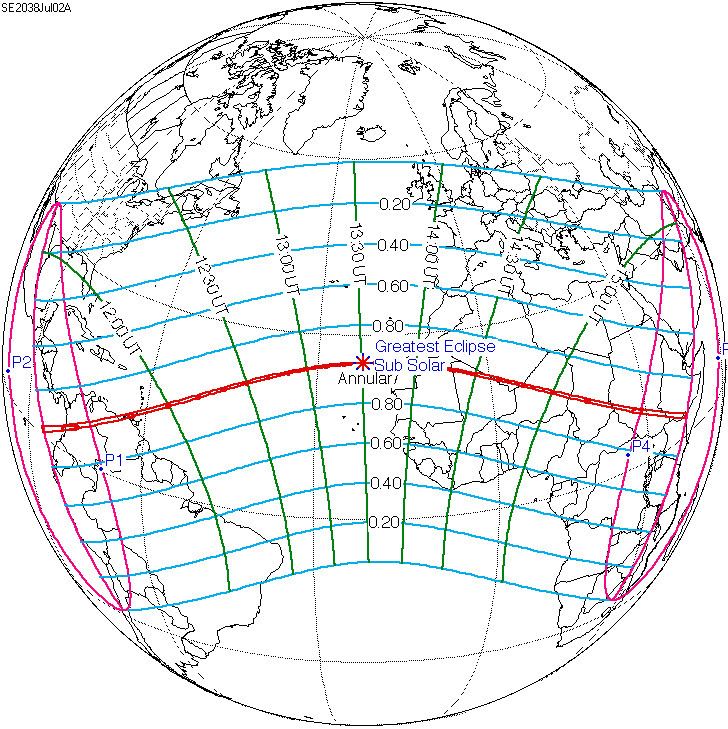Nature Annular Magnitude 0.9911 Max. width of band 31 km (19 mi) Start date July 2, 2038 | Gamma 0.0398 Duration 60 sec (1 m 0 s) Greatest eclipse 13:32:55 | |
 | ||
An annular solar eclipse will occur on July 2, 2038. A solar eclipse occurs when the Moon passes between Earth and the Sun, thereby totally or partly obscuring the image of the Sun for a viewer on Earth. An annular solar eclipse occurs when the Moon's apparent diameter is smaller than the Sun's, blocking most of the Sun's light and causing the Sun to look like an annulus (ring). An annular eclipse appears as a partial eclipse over a region of the Earth thousands of kilometres wide.
Contents
Images
Animated path
Related eclipses
There are a 7 eclipses in 2038 (the maximum possible), included four penumbral lunar eclipses: January 21, June 17, July 16, and December 11.
Solar eclipses of 2036-2039
Each member in a semester series of solar eclipses repeats approximately every 177 days and 4 hours (a semester) at alternating nodes of the Moon's orbit.
Note: Partial lunar eclipses on February 27, 2036 and August 21, 2036 occur on the previod lunar year eclipse set.
Metonic series
The metonic series repeats eclipses every 19 years (6939.69 days), lasting about 5 cycles. Eclipses occur in nearly the same calendar date. In addition the octon subseries repeats 1/5 of that or every 3.8 years (1387.94 days).
